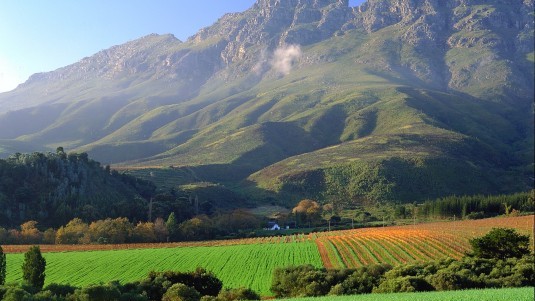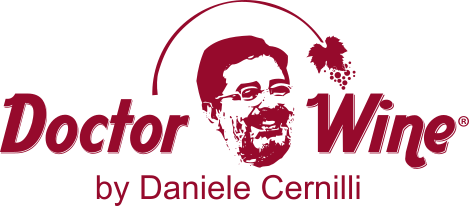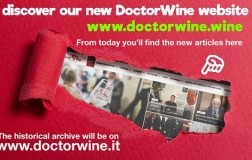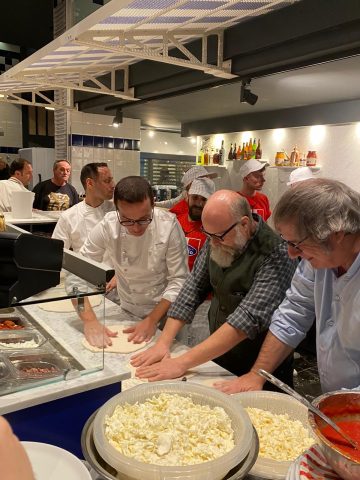Travel notes from South Africa

I made my first trip to South Africa before Easter. South Africa has a population of 55 million people of whom seven million are whites. The President of the Republic is Jacob Zuma who was not only just recently sentenced by the Constitutional Court for misappropriation of funds but also has the misfortune of following the great and charismatic Nelson Mandela, who brought about the end of apartheid.
The most widespread language used is Afrikaans, introduced by the Dutch colonialists, and there are also 50 or more other languages and dialects. For some years now English is being taught in schools, a language that is also gaining ground in other African nations and is well on its way to becoming the common language.
It was the Dutch who brought winemaking to South Africa in the second half of the 17th century, introducing the French varieties. The most historically common grape there is Pinotage, a cross between Pinot Noir and Cinsault. Annual wine production is about 10 million hectoliters, 60% of which is produced by cooperatives, 50% is consumed domestically and the rest exported. There are 700 wineries in the country and a host of craft producers.
Tachis used to say “vines and grapes love to breathe sea air” and a few kilometers from Cape Town and the coast is Stellenbosch, the name of both the city and an outstanding winegrowing area set in a breathtaking landscape. There are 170 wineries in this zone, all owned by the descendants of the Dutch and Anglo-Saxon colonialists, and cooperatives control only 10% of production. The climate benefits from cold, ocean breezes that originate in the Antarctic and the soil has variations of granite. The vineyards have a medium-to-low density, are cordon trained and spur pruned, are irrigated and are cultivated for the most part traditionally although some are organic. The Pinotage has been practically replaced by the so-called international varieties, those now common to the ‘New World’ or non-European countries.
Some estates here have historic, fascinating villas built in a Dutch style. The wineries I visited were set in vast gardens, rich in vegetation and flowers, all maintained by the low-salaried local population of color, while everywhere were wells to collect rainwater. Modern machinery is used for production, brought in when Mandela came to power in 1992 and international sanctions were lifted allowing for the modernization of the country. These estates have large areas for tasting and acquiring wine straight at the winery, with qualified personnel paying attention to the temperature of the wines being served. Many estates also offer food and hospitality. The names of the wines are either that of the varietal or an invented one and the quality of the wines I tasted was medium-to-high.
Among the white varietals is one that is not widespread in the ‘New World’, Chenin Blanc, which I like for its elegance, sapidity and freshness from a vibrating acidity. Because of the effects of climate change, this is a variety that should be allowed to be cultivated in the future in central-southern Italy.
Among the red grapes the most popular are Shiraz as well as Cabernet Sauvignon.
Estates visited:
JORDAN: Owned by Kathy Jordan who pays great attention to the history of the area and whose wines are reliable and professional.
MEERLUST: Founded in 1693, this is one of the most historic estates. Since 1980s, it has produced Rubicon, the same name as a wine made by Francis Ford Coppola in Napa Valley. The two wineries, however, are not at odds, each having a different target market. Rubicon was the first South African wines inspired by the classic Bordeaux blend. At a luncheon at Meerlust, organized magnificently in the cellar, I met Giorgio Dallacia (giorgio@dallacia.com), a Pordenone native who moved to Stellenbosch in 1974. I heard only good things about him during my visit for having contributed to boosting the quality of wines of different estates through his consultancy, advice and suggestions. And he never fails to promote Italian culture.
In my travels abroad I have often meet people of Italian origin who have enhanced the image of Italy and I have always been bothered by the fact that this is never recognized by Italy. Giorgio is a prime candidate for some kind of official recognition.
DEMORGENZON Suffused music plays from a vineyard near the entrance, something that I had already seen in Italy but was surprised to find here. This until the owner, Hylton Appelbaum, told me he had for some time been following the study of the language of plants carried out by Professor Stefano Mancuso (stefano.mancuso@unifi.it). Mancuso’s research into the ways plants communicate is also highlighted by Andrew Jefford in an article published in the April 2016 edition of the magazine Decanter. Music is a way to make vines smile.
RUSTENBERG: a vast estate run by Simon Barlow and his son Murray. The splendid villa is an enchanting place that has been rented out as a Hollywood film location.
RUST EN VREDE: owned by the enterprising Jean Engelbrecht who also owns eight restaurants in South Africa that he also uses to promote his wines.
DELAIRE GRAFF:The rich Swiss diamond and precious stones entrepreneur Laurence Graff made a huge investment in this estate that has 35 hectares of vineyards, over five hectares of manicured gardens and an architecture with fine attention to detail. The winery and cellar are cutting edge and the Relais Chateau hotel has 10 suites, three restaurants and museums-level artwork everywhere. More than an exaggeration or whim, this is a strong sign of confidence in the future of Stellenbosch wines.
MORGENSTER: Giulio Bertrand is a native of Biella and a textile tycoon who in 1992 began producing excellent wine and olive oil here that is considered by experts to be some of the best in the southern hemisphere. He has even planted Nebbiolo and Sangiovese in Morgenster and at a youthful 89 is still full of fascinating plans for the future. It was an honor to have met him.
HAMILTON RUSSELL VINEYARDS: This is not in Stellenbosch but in the nearby area of Hemel-en-Aarde and being no more than two kilometers from the coast it has an even cooler climate. The estate’s organically cultivated vineyards are being converted to biodynamic methods. Here they produce the finest Pinot Noir I tasted during my visit.
The best winemaking areas in the ‘New World’ are in fine form with increasing attention paid to winegrowing, winemaking, hospitality and marketing.

 Italiano
Italiano







